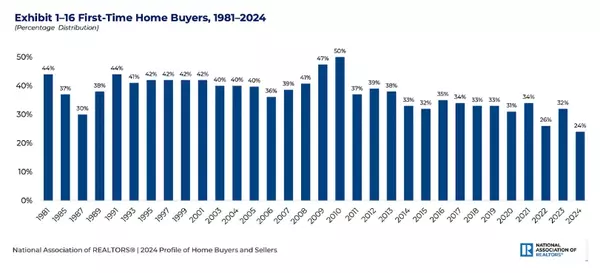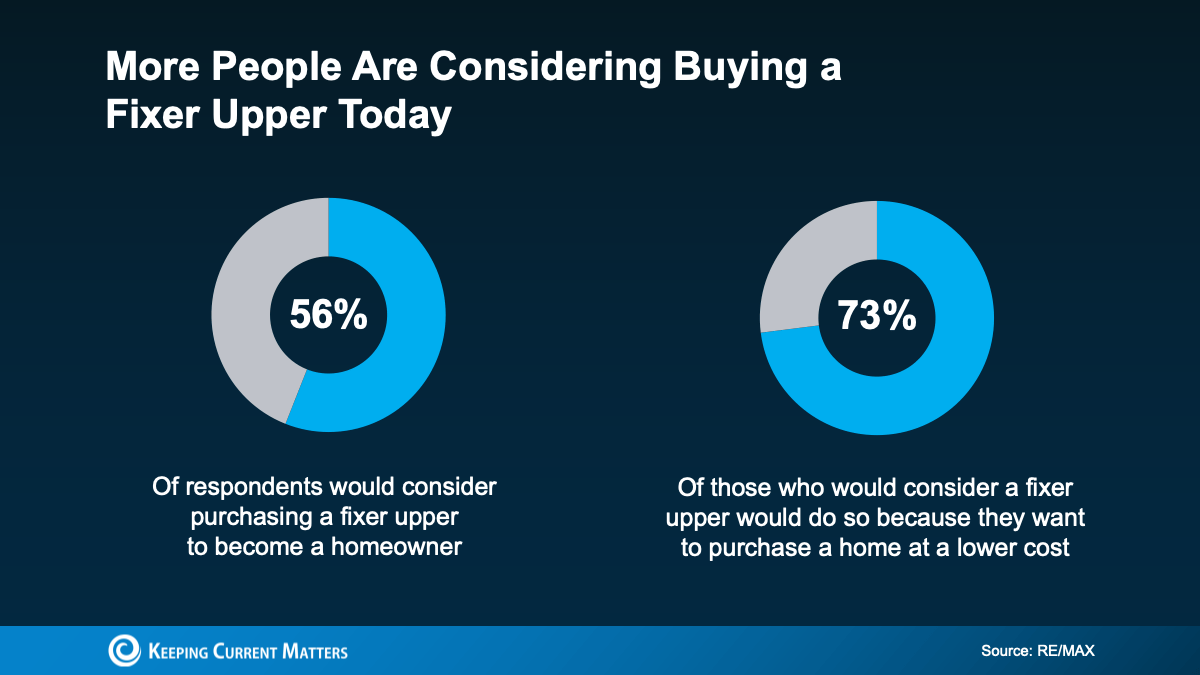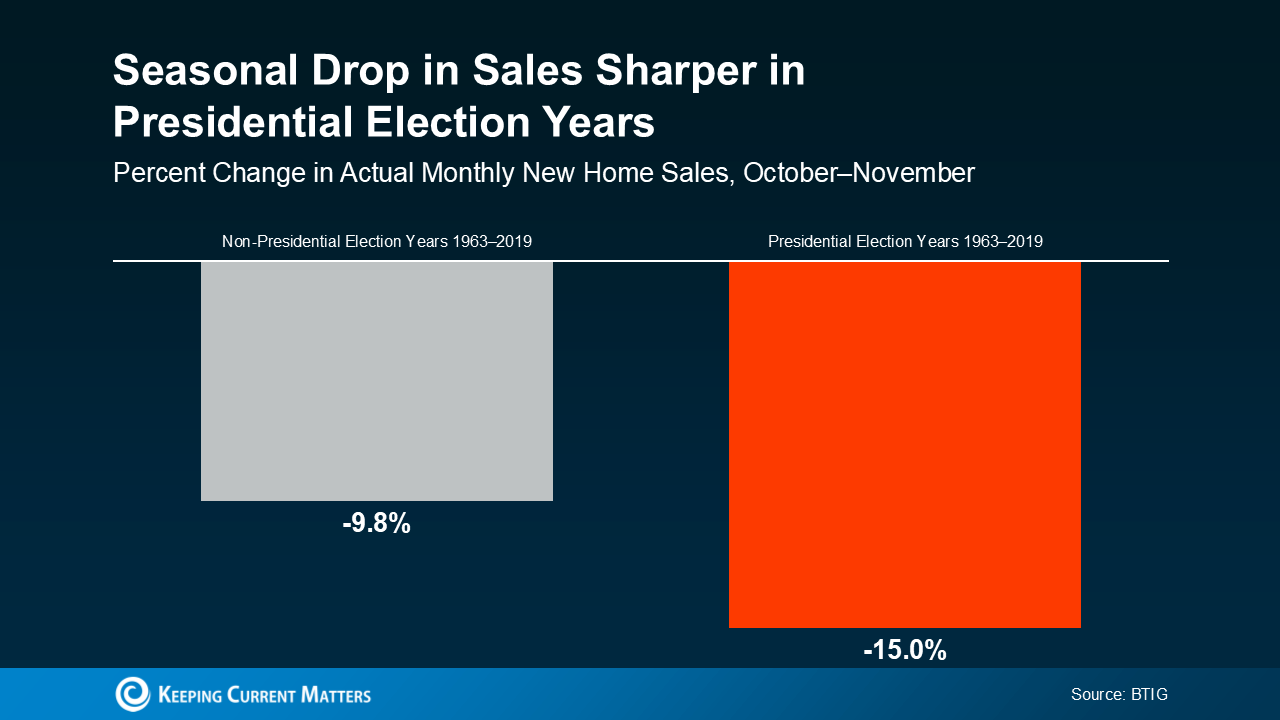
What To Look For From This Week’s Fed Meeting
What To Look For From This Week’s Fed Meeting You may be hearing a lot of talk about the Federal Reserve (the Fed) and how their actions will impact the housing market right now. Here’s why. The Fed meets again this week to decide the next step with the Federal Funds Rate. That’s how much it costs banks to borrow from each other. Now, that’s not the same thing as setting mortgage rates, but mortgage rates can be influenced through this process. And if you’re thinking about buying or selling a home, you may be wondering about the downstream impact and when mortgage rates will come down. Here’s a quick rundown of what you need to know to help you anticipate what’ll happen next. The Fed’s decisions are guided by these three key economic indicators: The Direction of Inflation How Many Jobs the Economy Is Adding The Unemployment Rate Let’s take a look at each one. 1. The Direction of Inflation You’ve likely noticed prices for everyday goods and services seem to be higher each time you make a purchase at the store. That’s because of inflation – and the Fed wants to see that number come back down so it’s closer to their 2% target. Right now, it’s still higher than that. But despite a little volatility, inflation has generally been moving in the right direction. It gradually came down over the past two years, and is holding fairly steady right now (see graph below): The path of inflation – though still not at their target rate – is a big part of the reason why the Fed will likely lower the Fed Funds Rate again this week to make borrowing less expensive, while still ensuring the economy continues to grow. 2. How Many Jobs the Economy Is Adding The Fed is also keeping an eye on how many new jobs are added to the economy each month. They want job growth to slow down a bit before they cut the Federal Funds Rate further. When fewer jobs are created, it shows the economy is still doing well, but gradually cooling off—exactly what they’re aiming for. And that’s what’s happening right now. Reuters says: “Any doubts the Federal Reserve will go ahead with an interest-rate cut . . . fell away on Friday after a government report showed U.S. employers added fewer workers in October than in any month since December 2020.” Employers are still hiring, but just not as many positions right now. This shows the job market is starting to slow down after running hot for a while, which is what the Fed wants to see. 3. The Unemployment Rate The unemployment rate shows the percentage of people who want jobs but can’t find them. A low unemployment rate means most people are working, which is great. However, it can push inflation higher because more people working means more spending—and that makes prices go up. Many economists consider any unemployment rate below 5% to be as close to full employment as is realistically possible. In the most recent report, unemployment is sitting at 4.1% (see graph below): Unemployment this low shows the labor market is still strong even as fewer jobs were added to the economy. That’s the balance the Fed is looking for. What Does This Mean Going Forward? Overall, the economy is headed in the direction the Fed wants to see – and that’s why experts say they will likely cut the Federal Funds Rate by a quarter of a percentage point this week, according to the CME FedWatch Tool. If that expectation ends up being correct, that could pave the way for mortgage rates to come down too. But that doesn’t mean they’ll fall immediately. It will take some time. Remember, the Fed doesn’t determine mortgage rates. Forecasts show mortgage rates will ease more gradually over the course of the next year as long as these economic indicators continue to move in the right direction and the Fed can continue their Federal Funds rate cuts through 2025. But a change in any one of the factors mentioned here could cause a shift in the market and in the Fed’s actions in the days and months ahead. So, brace for some volatility, and for mortgage rates to respond along the way. As Ralph McLaughlin, Senior Economist at Realtor.com, notes: “The trajectory of rates over the coming months will be largely dependent on three key factors: (1) the performance of the labor market, (2) the outcome of the presidential election, and (3) any possible reemergence of inflationary pressure. While volatility has been the theme of mortgage rates over the past several months, we expect stability to reemerge towards the end of November and into early December.” Bottom Line While the Fed’s actions play a part, economic data and market conditions are what really drive mortgage rates. As we move through the rest of 2024 and 2025, expect rates to stabilize or decline gradually, offering more certainty in what has been a volatile market.

What the Fed's Rate Cut Means for Mortgages
in First Time Home Buyers, Mortgage News What the Fed's Rate Cut Means for Mortgages When the Federal Reserve cuts rates, many assume that mortgage rates will follow suit. But if you’re in the market for a home, you might have noticed that mortgage rates have not immediately decreased, leaving you wondering why. The Fed’s rate cut decision does not directly control mortgage rates. Instead, it influences other economic conditions, which could impact the mortgage market. In this article, we’ll look at the relationship between the federal funds rate and mortgage rates and the potential outlook for both. Why Did The Fed Cut The Base Rate? In September, the Federal Reserve noted that economic activity has continued to expand at a solid pace. “The U.S. economy is in a good place,” Fed Chair Jerome Powell said, “and our decision today is designed to keep it there.” Due to positive progress in the economy, the Fed cut the federal funds rate by .5%, or 50 basis points. The main factors that played a role in this decision where: Low unemployment: The unemployment rate is still below the national average, indicating a strong labor market. Inflation nearing target rate: Inflation is approaching the Fed’s goal of around 2% while maintaining economic stability. These improvements gave the Fed confidence to lower rates, making borrowing money cheaper and helping to stimulate further economic growth. How Does The Fed’s Rate Cut Impact Mortgage Rates? While the Federal Reserve’s decision to cut the benchmark interest rate can impact mortgage rates, the relationship is not always direct or immediate. The benchmark rate influences the overall borrowing environment, economic outlook and investor response, which can lead to changes in mortgage rates. Although mortgage rates did not immediately decrease following the Fed’s rate cut in September, they had already fallen by about half a percentage point in July and August in anticipation of the Fed’s action. The effect of a Fed rate cut varies depending on the type of mortgage: Fixed-rate mortgages are less directly affected by Fed rate cuts but may decline over time. Adjustable-rate mortgages (ARMs) are more directly affected, as they are often tied to short-term rates that closely follow the federal funds rate. A Fed rate cut can also have broader influence on the housing market, including: Increased Buyer Demand: Lower rates can boost homebuyer interest and lead to more competition and higher home prices. Increased Refinancing Opportunities: Current homeowners can refinance to lower rates. Increased Buying Power: Lower rates help borrowers to qualify for larger loans. When Is The Next Fed Rate Cut? According to most economists, the Fed is expected to cut rates two more times before the end of the year, with one meeting in November and another in December. These rate cuts are predicted to be around 0.25% to 0.5%. Jerome Powell has indicated that we could see more rounds of rate cuts continuing into 2025. However, while the Fed may keep lowering the base rate, mortgage rates won’t necessarily follow a straight downward trajectory. In fact, most economists predict that mortgage rates will remain volatile in the coming months, fluctuating up and down before ultimately trending lower over the next 6-18 months. Should You Wait For Lower Mortgage Rates? The idea of lower mortgage rates may be tempting, but waiting may not always be a great strategy. Lower rates can improve affordability, but while rates may decrease, home prices may rise, which could offset the savings. Rates can change quickly in a volatile market. If you find a good rate, it could be better to lock it in rather than waiting for further rate cuts. You may also find some peace of mind with a rate float down, which lets you benefit from a lower interest rate if rates drop while you’re locked in. Mortgage rates are influenced by a variety of factors, and timing the market can be tricky. Reach out to one of our licensed Mortgage Loan Originators to discuss your unique situation and get prepared to seize the opportunity that’s right for you.

Mortgage Rates Spike Again After A Brief Drop
Mortgage Rates Spike Again After A Brief Drop Fed Rate Cuts Had Minimal Impact on Mortgage Rates The 30-year fixed-rate mortgage rates had hit 6.09% in the week ending on September 18 in response to the Fed rate cut. This sparked hope in many prospective home buyers. Unfortunately, current trends have taken a turn for the worse. The 30-year fixed-rate mortgage rates have increased consistently for three consecutive weeks. The 30-Yr FRM is at 6.54% and the 15-Yr FRM is at 5.71% as of October 24. What Do Mortgage Industry Experts Believe? Mortgage industry experts believe that the 50 bps rate cut was already included in the prevailing mortgage rates. They believe the Fed is unlikely to cut rates further this year, given the strong economy and jobs market. The mortgage industry experts believe: Fed is around 94% likely to cut rates by 25 bps in November and 86% likely to cut rates by 25 bps in December. These small cuts won’t be enough to spur loan and refinance demand. The Fed rate would end up being in the rate of 4.25% to 4.5%, which isn’t neutral enough to have a significant impact on mortgage rates. Impact of High Mortgage Rates Higher mortgage rates have already impacted application rates. According to the Mortgage Bankers Association, the number of applications sank by 17% in the week ending Oct 11. Refinance also dropped by 26% and the share of refinance applications fell below 50%. All trends indicate that mortgage rates are unlikely to drop significantly in 2024.
Categories
Recent Posts









